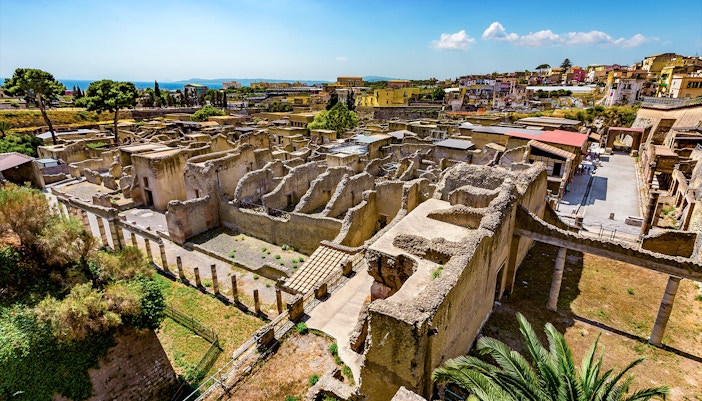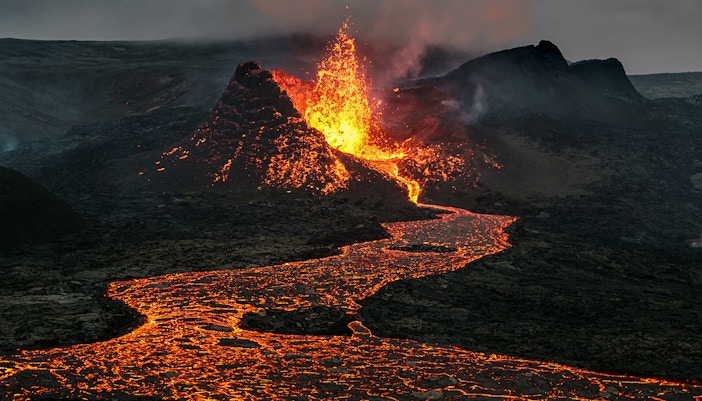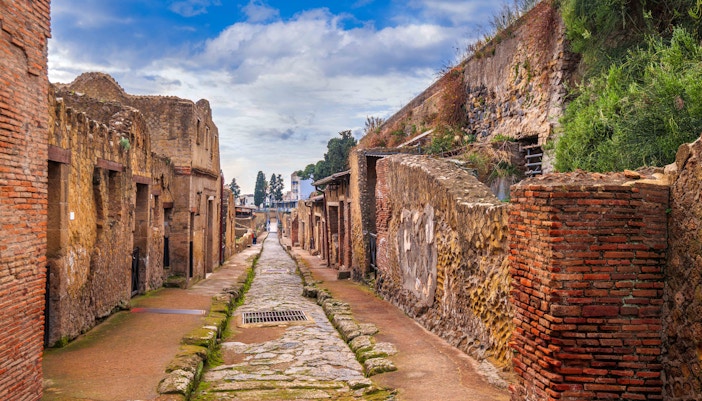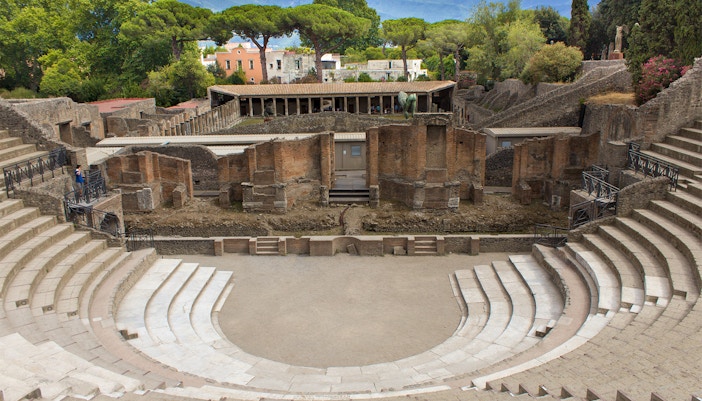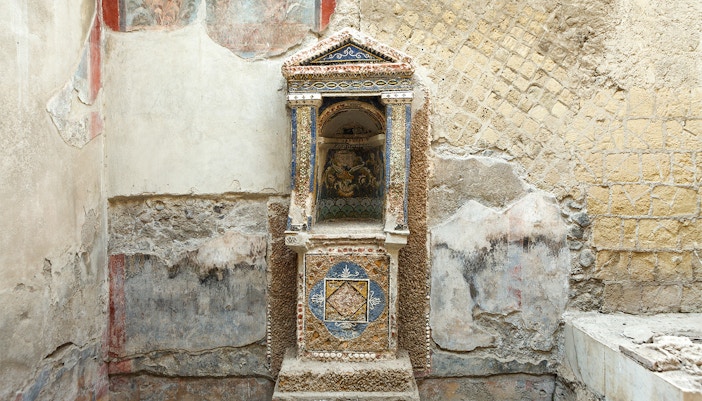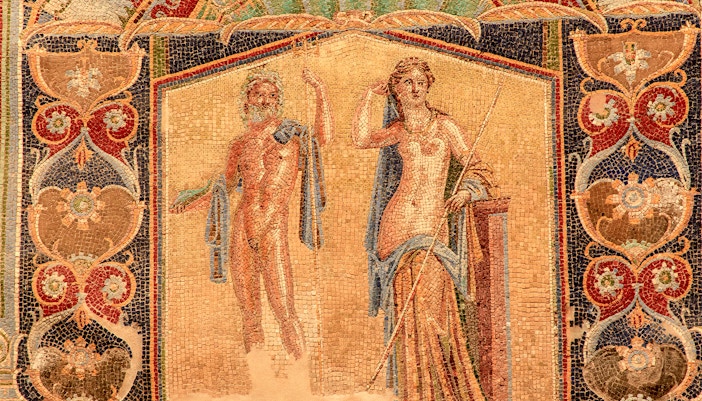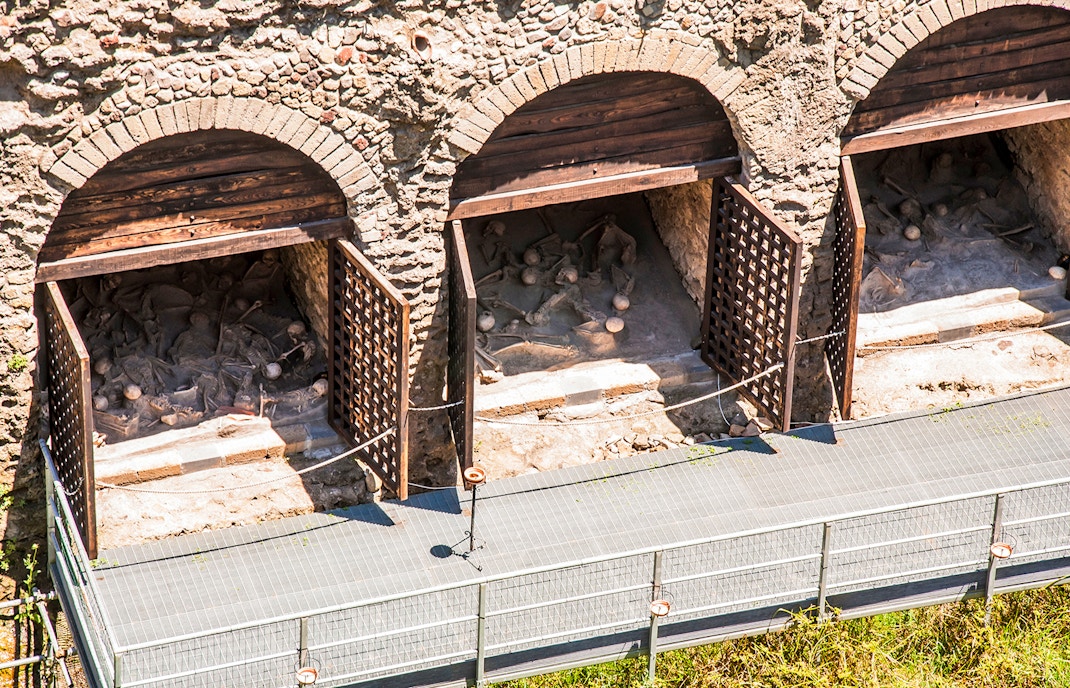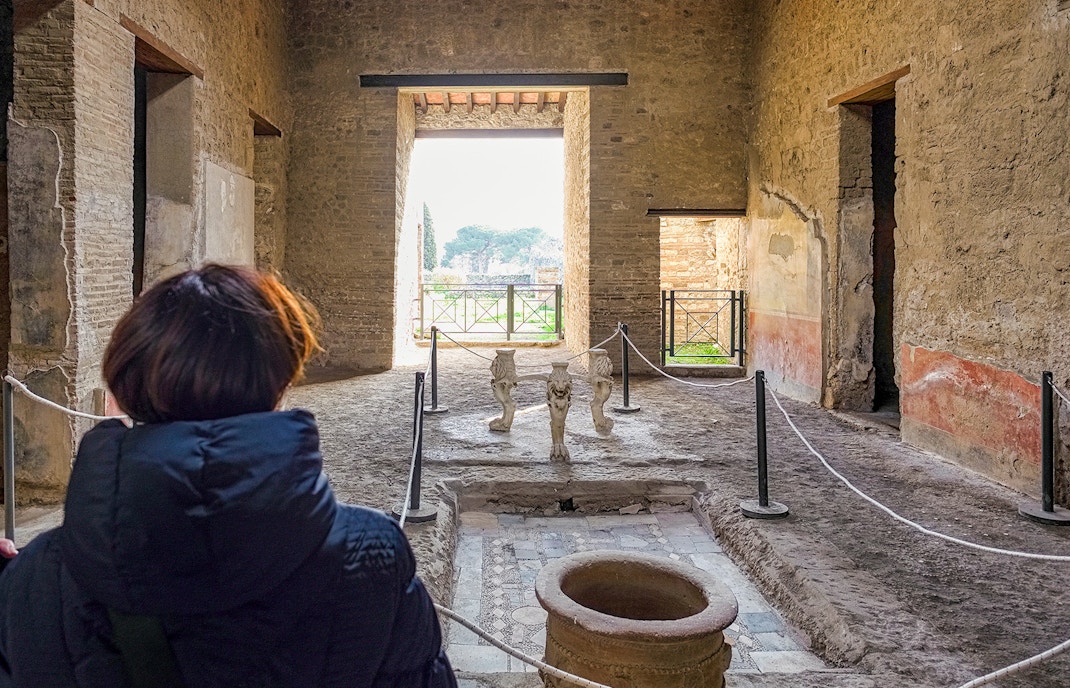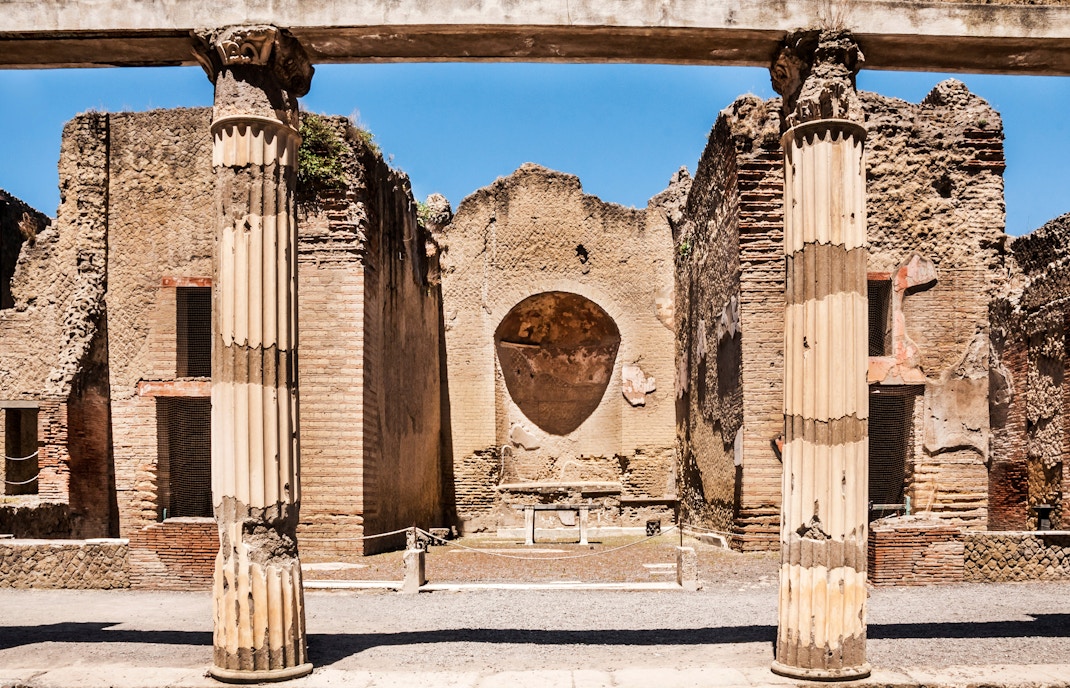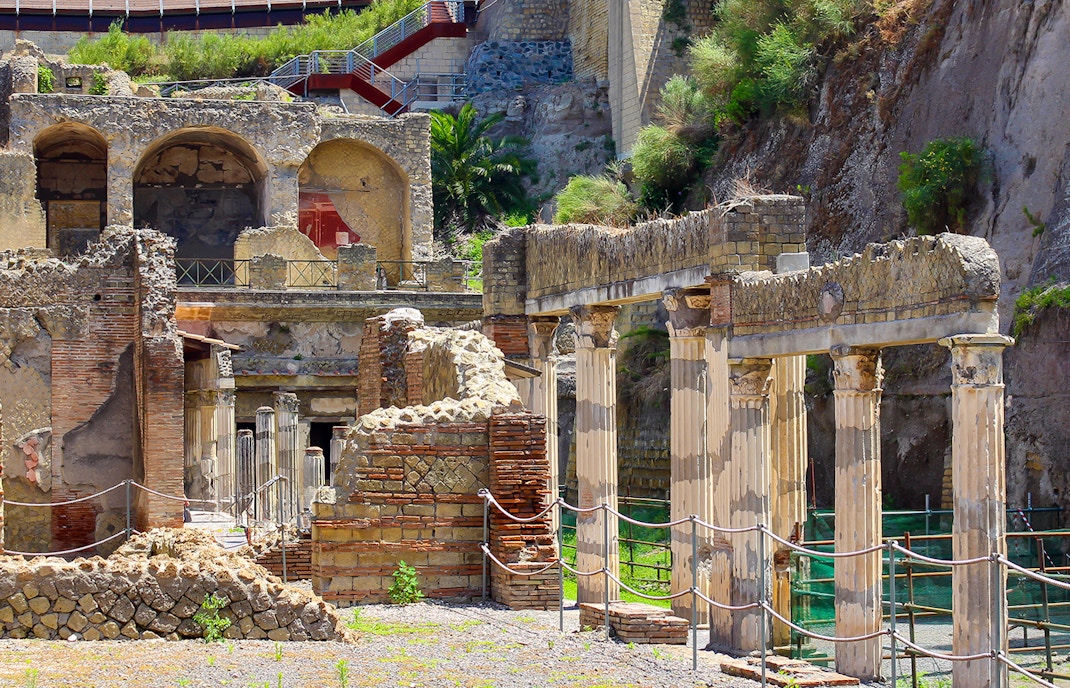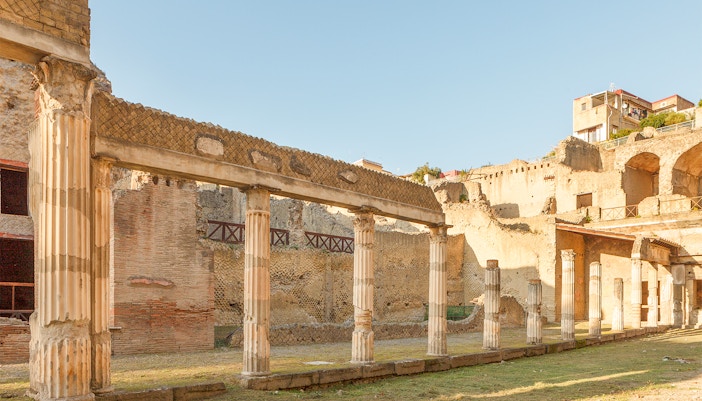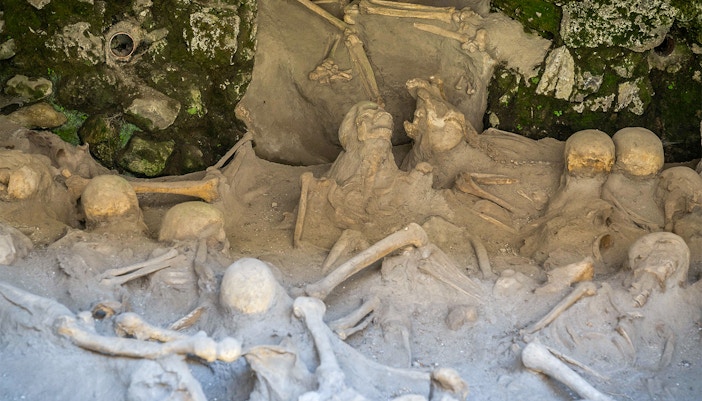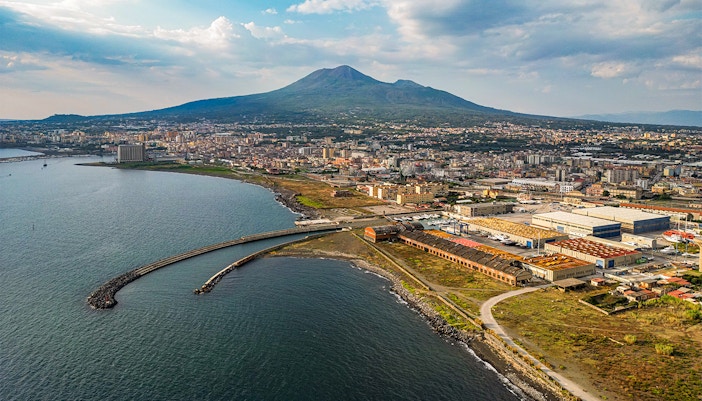6th century BCE to 89 BCE
In the beginning, Herculaneum changed quite a few hands, moving from the Oscans (an Italic tribe belonging to Campania and Latium), to the Greeks, the Samnites (another Italic settlement between the Latins and the Greeks), and finally the Romans in 89 BCE. Herculaneum, as it was discovered, showed all the trademark features of a flourishing Roman town. This included lavish villas, baths, public houses, a gymnasium and more.

